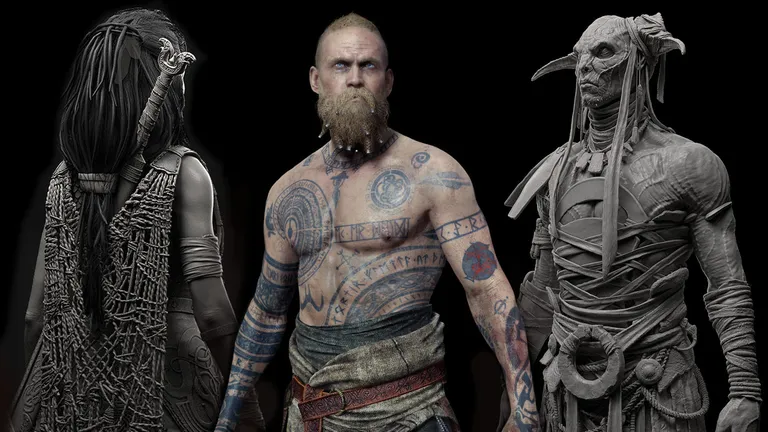
Short answer: A character artist designs and builds the characters of a game—sculpting their shapes, details, and personalities into 3D models that bring them to life.
Who is NOT a Character Artist?
- A person who only sketches initial ideas (that’s a Concept Artist) is not a Character Artist.
- A person who only rigs skeletons for movement (that’s a Rigger) is not a Character Artist.
- A person who only animates motions (that’s an Animator) is not a Character Artist.
- A person who only textures models (that’s a Texture Artist) is not a Character Artist.
What does a Character Artist do?
- High-poly sculpting: create detailed models of characters in ZBrush or Blender.
- Low-poly modeling: optimize for in-game performance.
- Retopology & UVs: prepare clean topology and unwraps for texturing.
- Texturing & materials: skin, hair, clothing, armor, props.
- Facial & anatomical accuracy: realistic or stylized forms with proper proportions.
- Collaboration: work with concept artists, riggers, animators, and technical artists.
Why it matters
Characters are often the emotional core of a game. They carry story, identity, and player connection. Without strong character art, even great narrative and gameplay can fail to resonate.
Common misconceptions
- “Character artists just make pretty models.” → They balance art, anatomy, performance, and gameplay constraints.
- “It’s all about humans.” → They create creatures, animals, and stylized beings too.
- “They don’t need technical knowledge.” → They must understand poly counts, UVs, shaders, and engine limitations.
Core skills & tools
- ZBrush, Blender, Maya, 3ds Max for sculpting and modeling.
- Substance Painter/Designer, Photoshop, Mari for texturing.
- Hair & fur tools: XGen, Ornatrix, Blender hair systems.
- Anatomy knowledge: human and creature anatomy.
- Optimization: baking normal maps, LOD creation.
Practical frameworks
- Pipeline: Sculpt → Retopo → UV → Bake → Texture → Rig → Animate.
- Silhouette clarity: readable shapes for quick recognition.
- Hero vs. NPC: higher detail budgets for main characters.
- Exaggeration for style: pushing proportions for stylized looks.
Portfolio tips
- Show turntables and wireframes of characters.
- Include sculpt-to-game breakdowns (high-poly to low-poly).
- Add texture maps and explain material choices.
- Present both realistic and stylized samples if possible.
Quick example
Think Kratos in God of War: detailed anatomy, realistic skin, armor, and scars.
Or Overwatch heroes: stylized proportions, clean silhouettes, expressive designs.
Author: Pouria Mojdeh
References:
- Ryan Kingslien – ZBrush Character Creation: Advanced Digital Sculpting (Wiley, 2010)
- Rafael Grassetti – ZBrush Professional Tips and Techniques (workshops, Gnomon, online)
- William Vaughan – Digital Modeling (New Riders, 2011)
- Scott Spencer – ZBrush Character Creation: Modeling, Texturing, and Painting (Sybex, 2011)
- Game Developer (formerly Gamasutra) – www.gamedeveloper.com
